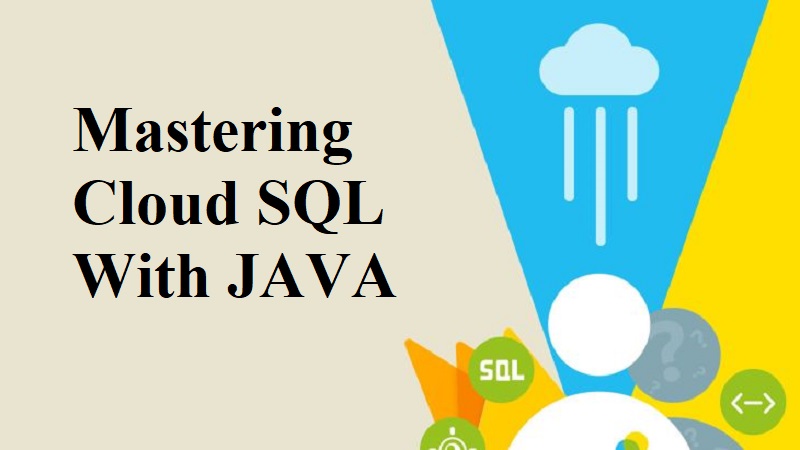Overview
As a result of the complexity of the banking services, innovative solutions are necessary. To meet the requirements of their customers, providers of financial software offer robust accounting solutions and advanced big data analytics platforms. The development of Java has been an essential component of contemporary banking services for a considerable amount of time now. In light of the quick rate at which technology are being developed, it is very necessary to remain current with the most recent trends and advances in the industry.
FinTech refers to the process of developing an environment that emphasizes transactions that are simple, speedy, and customer-oriented. To address problems that are prevalent in the sector, banking applications development in Java architecture makes use of digital-first solutions. Because of this, further businesses have been inspired to enter the industry. You will be able to achieve success in Java Development for banking services with the assistance of this post. This gives all of the information that is needed to get started.
Current Landscape of Banking Software
Overgrowth is occurring in the mobile banking services business on a global scale. As a consequence of technical breakthroughs, digital transformation, and the increased usage of smartphones in recent years, an increasing number of individuals are electing to utilize online banking services.
Value of Transactions
Based on statistics that were published by the Statista portal, it appears that the total amount of deals in the digital payment section can reach $9.46 trillion in 2023. Furthermore, the total value of purchases can show a yearly increase (CAGR 2023-2027) of 11.80%, which would result in a projected total of $14.78 billion by the year 2027.

80 percent of banks anticipate a modest rise in technology expenditure, ranging from one percent to nine percent, while 15 anticipate a major increase of 10 percent or more. Particularly noteworthy is the fact that the anticipation of big rises decreased after March 9, indicating a more cautious attitude in the wake of the recent turmoil in the financial industry.
While 46.3% of banks think that the number of technology personnel will stay the same, another 45.1% anticipate that there will be a little rise in the number of technology staff. However, respondents’ optimism over the expansion of the IT workforce has decreased as a result of bank failures.
Digital Client Transactions
The current median percentage of customers who do not transact using digital channels is 34.5%, which indicates that more than half of bank customers still do not do so. On the other hand, it is expected that this would rise by 46.5% over the next year, with some financial institutions, like IBM, feeling strong digitalized acceptance.
Banks are uncertain about raising their use of fintech development services for many reasons, the quite important of which being the expenses involved and the need to keep up with controlling needs. Although this is the case, there is an important demand for such services, and banks often preserve connections with many different services.
Introduction to Java Development in Banking Services
In this digital era, where users suppose real-time rights to use their bank info and transactions, Java development in banking services is essential in consultation with these developing loads. From online banking platforms to portable banking apps, Java authorizes developers to make energetic and user-friendly borders that improve general customer knowledge.
Java allows for a variety of ways to be used when building and implementing banking services. These methods range from one that is suitable for starters to more advanced ones that make use of multithreading and synchronization. There are normally three levels that make up the architecture of a bank’s transaction system: the display layer, the business layer, and the data layer. The effective administration of these layers is made possible with the assistance of innovations such as Java software.
Banking applications development in Java offers a foundation for the development of service-oriented applications and streamlines processes that are connected to databases. A distributed environment is necessary for all contemporary financial applications. Therefore, programmers must investigate solutions to ease distributed computing. As a result of Java’s networking capabilities, the implementation of distributed computing is simpler.
It is common for financial institutions to be resistant to change. Thus, when confronted with the choice between entirely constructing from the start or overhauling and replacing the present methods. The response ought to be crystal clear; changing existing systems requires fewer resources and requires less time. In addition, given that Java is the language preferred by developers who are employed by financial or banking services institutions, it is not surprising that Java would be used in the process of updating the technological infrastructure of financial institutions.
Understanding Different Methods of Programming in Java
Java is quite flexible and authoritative, and it can be used to change an extensive variety of apps, including those for the web, desktop, and mobile devices. On the other hand, not every app works in a similar method. Different techniques of programming in Java may be more appropriate and efficient than others, depending on the degree of difficulty of the project and the needs that must be taken into consideration.
Rookie Approach
When it comes to beginning programmers, the sequential coding style is the most natural strategy. We are tasked with completing three different tasks: task1(), task2(), and task3(). Within the framework of the sequential process, these activities are carried out in the order listed above. This indicates that the program will wait for task1() to complete before beginning task2() and so on before beginning task3(). Although it is straightforward to comprehend, this strategy does have a few limitations.
Method Based on Multiple Threads
Through the use of multithreading, it is possible to execute many activities in a single program, which is quite a real policy. Java has great support for multithreading, which allows programmers to make programs that are both tremendously efficient and receptive without sacrificing performance. By using this method, each job is given its thread of execution, which enables it to execute independently as well as simultaneously with other threads.
As a consequence, the program no longer needs to wait for the completion of one job before beginning another operation. Instead, it can carry out numerous activities concurrently, hence maximizing the usage of central processing unit resources that are accessible. Multitasking, on the other hand, allows for all jobs to be completed concurrently, which results in a large reduction in lost time.
To service several clients at the same time, you must first create distinct threads for each sort of work and then let those threads execute concurrently without causing any interference with one another via blocking. This not only increases your productivity but also increases the level of pleasure that your customers feel since they are provided with service that is both timely and efficient.
Synchronization in Multithreading
It is essential to keep in mind that multithreading adds an extra layer of complexity, which is referred to as the difficulty of accessing shared resources. When many threads try to edit shared data at the same time, the results might be unexpected and unsatisfactory, with the potential for negative repercussions. The good news is that Java has a synchronization technique that can be used to solve this problem. To avoid conflicts and preserve the integrity of the data, synchronization guarantees that only a single thread may access a shared resource at any one moment inside the system.
A Timeline of the Fintech Explosion
1) The worldwide economic and financial crisis of 2008. Fintech entrepreneurs put their heads up, aiming to capitalize on the general disarray and offer innovation to the market. Traditional banks lost momentum while fintech startups gained ground.
2) 2013 year. The value of Bitcoin spreads $1,000 for the very initial time, marking the start of the age of cryptocurrencies and blockchain technology, which is considered by both optimistic and undesirable features. Everyone was interested in “magic Internet money” out of the blue.
3) 2015 year. The valuation of China’s Ant Financial, the giant that is responsible for Alipay, has reached $45 billion. A further reminder is given to West that the term “fintech” is more than just a jargon; it is a wealthy sector. Now is the moment to have a quick pace.
4) 2018 year. At a staggering $55 billion, global investments in financial technology have doubled. There was a lot of rivalry for a part of the fintech part.
5) Many are examples of digital-only banks that started to get approval in 2019. Even though they do not have any corporeal branches, they can contend with the huge conservative banks by offering services that are simple to use and preserving lower costs.
6) In the 2020. Everyone is needed to be online due to the COVID-19 pandemic. When individuals avoid making personal contact, there is a significant increase in the use of digital payments and net banking services. The explanations offered by fintech firms have changed from being a necessary addition to an important one.
7) Decentralized finance, normally called DeFi, begins to get a hold in the year 2021. Platforms that allow individuals to advance, copy, or trade without the participation of mediators are being quite famous. DeFi will have more than $40 billion in possessions by this year, signifying to the world that the promise of blockchain expertise extends outside the dominion of cryptocurrencies.
8) It is 2022. Fintech is seeing a gush in countries such as India, USA, and SA. A growing number of consumers are getting their first experience of contemporary financial services thanks to the proliferation of new companies and applications, which are filling the void left by conventional banks.
9) 2023: Governments and organizations all around the globe begin to establish regulations for financial technology to guarantee that it is both secure and creative. The world begins to see fintech not only as a fad but rather as the new standard in the financial industry.
10) You are now formulating a plan for the banking software that you want to create, with the expectation that it will cause a disruption in the industry and be included on such a list in a few years. To avoid bringing the drawbacks of conventional banking services into the modern world, what should it get rid of?
How is Java Revolutionizing the Banking Industry?

Java’s ability to produce new and cutting-edge solutions is giving rise to a transformation in the financial technology sector, which in turn is redefining the landscape of finance. Concurrency is one of the most notable characteristics that contribute to Java’s beneficial nature for the development of financial technology. It can perform complex and high-volume FinTech tasks, such as real-time data processing and analytics, because of the strong language concurrent execution that it has.
Furthermore, the modular design of the system further boosts its value in the development of financial technology. The Java Platform Module System (JPMS) makes it possible to establish code into distinct modules, which lessens the amount of time required to make, challenge, and place self-contained kinds of functionality. Also, Maven, which is a software project organization tool, offers Java developers help in properly handling dependence, builds, and placements.
The concurrency support, interconnection, and flexibility of Java are the fundamental components that contribute considerably to the platform’s role in transforming the financial technology industry. These features enable developers to design complex financial systems. Other explanations include the ones that are listed below:
Secure Access to the Data
In the first place, applications that are designed using Java can carry out essential functions inside the Java Virtual Machine. Java will, without a doubt, be able to access data and files, but when compared to other programming languages, it is still a more secure and safer option. Java must be a component of a trusted resource that has a verified signature. As an example, even if a malicious application manages to obtain access to data and files, the administrator can forcibly stop the Java Virtual Machine, which would result in the whole data access being removed.
No Possibility of Attacks at all
On the other hand, if the applications are designed using C++ and C, it enables users to concentrate on the usual operations of the device while the applications are always operating in the background. Users can design new services that improve security when they utilize Java. In software that is based on Java, everything is compiled with the byte code, which implies that it is not susceptible to attack or modification.
Assurance of Safety
The financial technology business is also concerned with security, which is vital. Banks and other monetary firms have a responsibility to protect the individual and monetary data of their clients against unauthorized access and fake activity. Java Consulting provides a diversity of safety aspects that make it an outstanding choice for apps in the economic sector.
Administration of Memory
The fact that Java offers efficient memory management is yet another reason why it is suited for financial applications. Recall that it is equipped with an automatic trash collection system (trust us, this is an excellent tool for app development). Java is equipped with a try-catch block, which is an ideal tool for stopping an application from leaving the program. It will be possible for the developer to determine whether or not a certain code block is producing an error, and then they will be able to transmit instructions to the Java Virtual Machine to simplify the operations.
Partners in Technology that are Certified
For the service provider to be considered qualified, they must be accredited and have technical experience in Java application development. A significant amount of money has been invested by the banking sector in software languages, notably Java. Therefore, the language can enable applications for online banking services, and it is highly popular among those working in the banking business.
Sustaining the Community
Java is reinforced by a huge and dynamic community of makers who are continually contributing to the language’s expansion. Users get the chance to connect with other members of the community who may have had difficulties comparable to their own. Interactions between contemporaries often result in solutions that apply to the actual world. Developers are guaranteed to have access to resources and tools and help in the pursuit of finding solutions to difficult challenges because of the support they get from the community.
Java Gets Brand Loyalty
Customers are told to be faithful to your brand while they are dedicated to buying your products. Clients are more likely to be loyal to a corporation if they have the intellect that they are a part of the community. To be a member of a wider group is now quite as significant as ever before; it is no longer only about your product. Customers who are loyal to your brand will always choose you over your rivals, notwithstanding if it is because of your exceptional customer service, your supreme product variety, or any other way that you distinguish yourself from the struggle.
Mobile Wallets
Handling one’s money in a society that is so money-oriented is a difficult task. Conversely, the development of Java outlines, ML, and AI has made this job simpler and less time-consuming. In the present years, one of the quite cutting-edge innovations has been the start of mobile wallets, even called electronic wallets, for the objective of handling personal funds. AI and Java-based algorithms are used in the expansion of mobile wallets to help customers make the best choices regarding the spending of their capital.
Method Signature
The method’s name and the list of arguments that it can receive are the components that make up a method signature. This facilitated the ability to differentiate between methods inside the same class. There is a significant relationship between method signatures and method overloading that is at present important for developers to consider Java development for banking Services.
Procedures that are Simplified
The majority of digital banking services activities have been simplified as a result of the proliferation of digital banks. The process of refining functions not only helps to reduce resources and time but also enables internal banking divisions to perform much more efficiently. Additionally, as a result of the bank’s operations being streamlined, it will attract a greater number of customers.
Key Trends Shaping the Future of Java Development in Banking Services
In the banking sector, Java has been transforming rapidly with the use of vital drifts, which will help transform the future of industries. The most important drift is the constantly enhanced use of cloud-native that can be used in the applications of banking sectors. The development of cloud-native allows banks to have flexibility. Moreover, it is one of the affordable programs that help users securely provide effective services.
There is another important development in the increase of architecture micro solutions in Java that is highly used in banks. Microservices help banks to break down complicated applications into individual services which can be used independently. This type of approach increases flexibility and promotes constant arrangement and incorporation. In short, it enhances the system of resilience.
In addition, the use of machine learning and artificial intelligence incorporated in Java has brought a revolution to the banking sector. Customized recommendations, AI-targeted chatbots, and tools that detect potential risks and detection of fraud are some of the new applications that transform the experience of customers. It also helps provide efficiency while using banking services.
Moreover, the emphasis on cyber security is increasing all over the globe. Cyber security adopts the safe practice of coding and heavy security in the development of Java, which is escalating in banking services. The ever-increasing threat of cyber attacks and stealing data is also a big threat to banking solutions. Hence, banks are incorporating a top level of security that will protect customers’ vital information and make sure that their information is safe.
In short, the above-mentioned points are again shaping the future of Java’s development in the banking sector. It brings out innovative methods and improved customer experience, along with effectiveness in the ever-evolving financial stream of 2024.
1. The analysis of Big Data
Banks and other financial institutions, which serve billions of consumers, are without a doubt the businesses that generate the most data across the whole worldwide market. In the game of digital banking services, the next winners will be the financial institutions that can supply their customers with individualized offers and experiences constantly. It is possible to find the answer to the question of what customers want and need by looking through the mountains of data that are collected from the different financial systems.
It is only through the process of data analysis that banks can properly listen to their customers and provide tailored financial services that are of assistance to them. A wide range of data sources, such as online payments, ATM transactions, e-banking, Internet of Things devices, client data obtained for Know Your Customer programs, biometric identification, and so on, may be used by financial institutions.
2. Skills are in more demand than ever before
In the business finance and services market, the new workforce should be productive and have a slick capacity to execute. Java can successfully manage a fast-paced environment, which leads to increased rates and contributes to the development of the organization.
According to findings from a recent study, thirty percent of firms are more inclined to employ AI than human resources to more effectively streamline efficiency.
3. Low-code or no-code platforms
Because of the very competitive nature of the industrial environment in the e-banking sector, it is necessary to have transparency and access to contemporary approaches to construct digital solutions. Platforms that use a low code or no code strategy are the solution to the problem of the requirement for speedier delivery of goods and services in the banking industry and beyond. By using such platforms, the method of developing software is significantly simplified. This is because these platforms feature already-constructed elements that can be used to construct a service, process, or item with no understanding of programming.
4. Rise of Machine Learning
The truth that Java is a multiparadigm programming language at its core is one of the features that makes it one of the most beautiful and distinctive programming languages. This suggests that Java is not just a tool but also an outline. Java has become a noteworthy programming language in the field of ML, and as a result of this, Java has radically changed how Java developers approach the process of software development. It is anticipated that the Java programming language will become more prominent in the field of machine learning.
5. Utilize Mobile Devices
Java is a programming language that offers a strong basis for the development of high-performance Android mobile apps. Its vast documentation, robust libraries, and significant community support all contribute to this foundation.
Conclusion
Java will undoubtedly become the dominant language in the financial sector in the not-too-distant future. As a result of the rapid pace at which it is developing, the Java Application Development Services have become simpler for both people and banking organizations. The solutions that these developing technologies give are both quicker and more efficient. Financial institutions give much consideration to the future as they make massive investments.
Frequently Asked Questions (FAQ)
1) Why is Java so popular in banking services?
When dealing with financial data in Java, it offers strong security, defending against online attacks and guaranteeing the accuracy of sensitive financial data.
2) What is the future of banking services for India in 2024?
In 2024, the banking services industry is cautiously expecting a positive outlook. The presence of stable interest rates, a strong GDP, and decreasing inflation may have a good impact on lending and deposit operations. The focus on technology and infrastructural developments opens up expansion opportunities.
3) What makes Java crucial in the Fintech sector?
Java is essential in web development because it offers a strong and adaptable framework for creating server-side applications.





